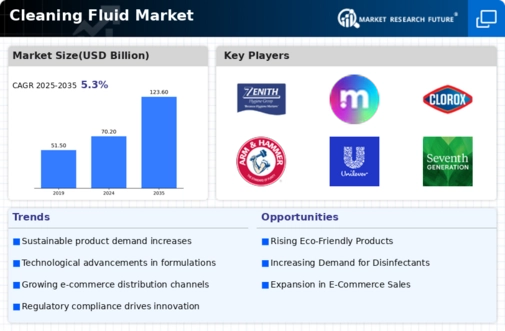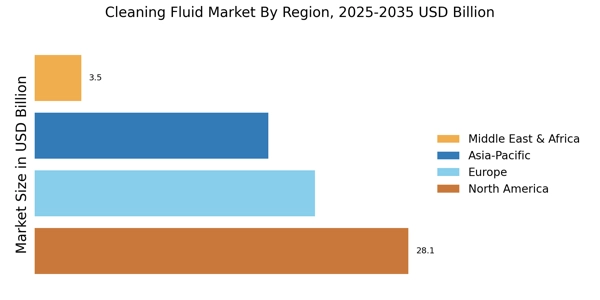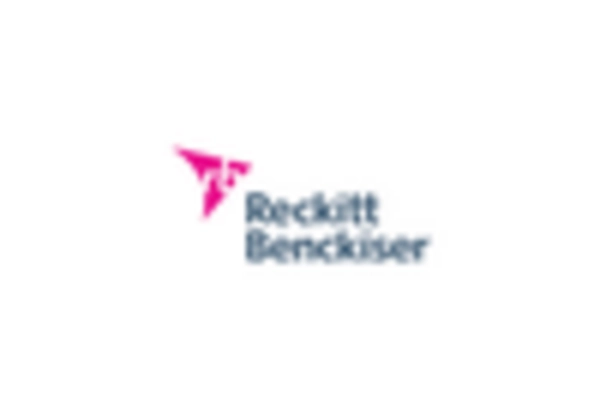The Cleaning Fluid Market is currently characterized by a dynamic competitive landscape, driven by increasing consumer demand for effective and environmentally friendly cleaning solutions. Key players such as Procter & Gamble (US), Unilever (GB), and Reckitt Benckiser (GB) are strategically positioned to leverage innovation and sustainability as core components of their operational focus. Procter & Gamble (US) emphasizes product innovation, particularly in developing eco-friendly cleaning products, while Unilever (GB) has made significant strides in regional expansion, particularly in emerging markets. Reckitt Benckiser (GB) focuses on digital transformation, enhancing its e-commerce capabilities to meet the growing online shopping trend. Collectively, these strategies shape a competitive environment that is increasingly focused on sustainability and consumer engagement.
In terms of business tactics, companies are localizing manufacturing to reduce costs and improve supply chain efficiency. The Cleaning Fluid Market appears moderately fragmented, with several key players holding substantial market shares. This fragmentation allows for a diverse range of products and innovations, while the collective influence of major companies drives competitive dynamics, pushing smaller players to adapt or innovate to maintain market relevance.
In August 2025, Procter & Gamble (US) announced a partnership with a leading technology firm to develop AI-driven cleaning solutions aimed at enhancing user experience and product effectiveness. This strategic move underscores the company's commitment to integrating advanced technology into its product offerings, potentially setting a new standard in the market for smart cleaning solutions. The collaboration may also enhance Procter & Gamble's competitive edge by appealing to tech-savvy consumers seeking innovative cleaning options.
In September 2025, Unilever (GB) launched a new line of biodegradable cleaning products, reinforcing its sustainability agenda. This initiative not only aligns with global environmental trends but also positions Unilever as a leader in eco-conscious consumer products. The introduction of these products could attract environmentally aware consumers, thereby expanding Unilever's market share in a segment that is increasingly gaining traction.
In July 2025, Reckitt Benckiser (GB) unveiled a comprehensive digital marketing campaign aimed at promoting its cleaning products through social media platforms. This campaign reflects the company's strategic focus on digital transformation, targeting younger demographics who are more engaged online. By enhancing its digital presence, Reckitt Benckiser may effectively increase brand loyalty and consumer engagement, which are crucial in a competitive market.
As of October 2025, the Cleaning Fluid Market is witnessing trends that emphasize digitalization, sustainability, and the integration of artificial intelligence. Strategic alliances among key players are shaping the competitive landscape, fostering innovation and collaboration. The shift from price-based competition to a focus on technological advancement and supply chain reliability is evident. Companies that prioritize innovation and sustainability are likely to differentiate themselves in an increasingly competitive market, suggesting a future where consumer preferences will heavily influence product development and marketing strategies.


















Leave a Comment